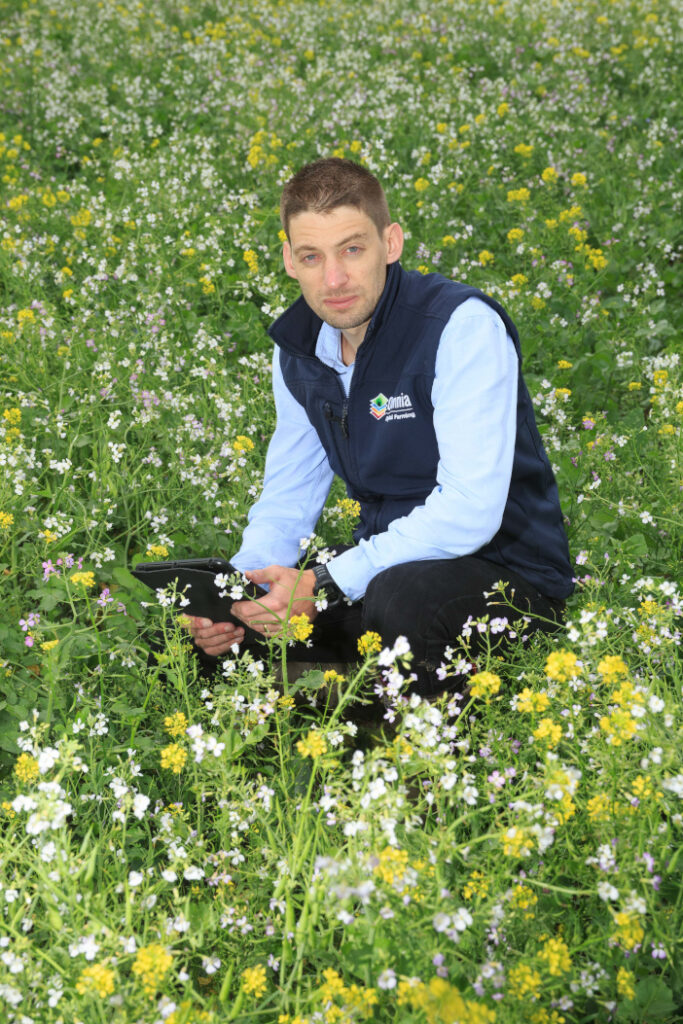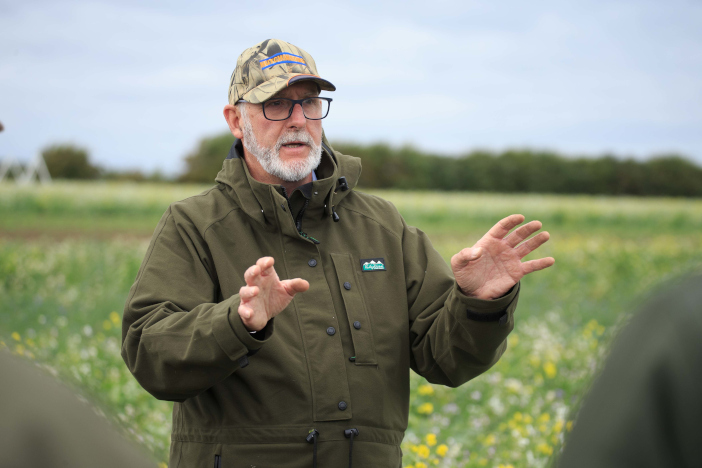A recent open day held by Hutchinsons and hosted by P F England & Sons, Warboys, Cambridgeshire, explored the options available under the Sustainable Farming Incentive (SFI) and how to maximise the benefit for farm businesses.
“There are many SFI options that can help mitigate the loss of BPS, but you have to do what’s right for your farm and not just chase the payments on offer,” environmental services specialist, Matt Powell said.
“Approach the SFI by keeping it simple at the start and build things up gradually. Begin by looking at what you are doing on the farm already, and then identify where it might be possible to integrate options that align with the aims of the business, whether that’s soil health, the environment, or crop productivity.
“Be clear about what you’re doing it for, and what you want from it, rather than simply doing the bare minimum to ‘tick a box’ that will get you the most money.”
The company said that there could be some easy wins within the schemes, where farmers can be paid for things that they were already doing, or should have already been doing. “Red Tractor standards, for example, require an Integrated Pest Management Plan to be in place, and the SFI offers £989 per year towards this. Likewise, for farmers already assessing soils on a regular basis and doing a soil management plan, there’s £5.80/ha, plus £95 per agreement, available towards that.”

Mr Powell further noted that while soil payments had been reduced, it was still worth doing as understanding the soil was fundamental to growing productive crops. “Don’t forget, payments are often designed to subsidise the cost of doing various options, rather than being set at a level where it’s a money-making exercise.”
Other payments could be used as a catalyst for change and to deliver wider benefits, although careful thought was needed to select options that maximised this.
Weighing the options
Cover crops were a clear example of why it was important to target measures to individual situations, Mr Powell added. Multi-species winter cover was likely to be a popular option for arable farmers, with annual payment rates set at £129 per hectare.
However, Mr Powell said that with so many mixes available, care had to be taken when choosing the best cover for your farm. “If you’ve not grown cover crops before, it’s worth trying a small area first, and maybe experiment with two or three different mixes to see what works in your soils and growing conditions. Multi-species mixes are best, because if you compromise on the number of species, there is a greater risk that you don’t achieve the cover required if there are problems during establishment.”
Technical manager Dick Neale urged anyone considering cover crops to be clear about what they wanted to achieve and the particular growing conditions. Legumes, for example, have often struggled to perform on soils which have not had legumes planted for a number of years. This is due to the lack of rhizospheric bacteria needed for nitrogen-fixing.
In these cases, it was better to introduce them slowly to let the bacteria populations build rather than trying to establish a legume-based cover that could fail and jeopardise payments.
Mr Neale added that there were key differences within individual plant species that were important to recognise. Mustard was just one example and is present in many mixes.
“Both brown and white mustard are brassicas, but while brown mustard produces softer stems that generally snap easily when you are drilling into the cover, white mustard produces more lignified, upright stems that can be problematic if it’s not managed correctly. Nutrients in brown mustard may also be released more readily than in white mustard due to the latter taking longer to breakdown. Both have a place, but must be used appropriately.”

Another example were fodder and tillage radish, which both produce a taproot that can penetrate the soil profile. However, tillage radish generally has a shorter growth compared to the tall stems of fodder radish, which could pose issues for those looking to drill directly into the cover with a tined machine.
“Again, these examples highlight the importance of taking your time to get any SFI option right, rather than just doing the minimum to chase the money available,” Mr Neale concluded.
Quantifying cover crop benefits
The SFI payments are just one advantage of cover crops but quantifying these can be a challenge. Hutchinsons states that its cover crop assessment service can provide growers with valuable insight.
Analysis of the MaxiCatchCrop mix grown on the Warboys site found that it put on 22.8 tonnes per hectare of fresh weight in a six to eight week period between July and September. This is equivalent to five tonnes per hectare of dry weight and contains 1.6 tonnes per hectare of carbon, about the same as 20 tonnes per hectare of farmyard manure.
“It just shows, that even with a relatively short-lived catch crop, it is possible for an arable farm without livestock to grow large amounts of its own carbon, which is so crucial to feeding healthy soils.”
It also revealed that the cover contained 143kg per hectare of nitrogen, 115kg of potassium and 15kg of phosphate. “Yes, the plants have taken a lot of that nutrition out of the soil, but it’s not being lost. It’s surprising how quickly that material will breakdown and release nutrients back into the soil, providing you’ve chosen the right mix and manage it correctly from sowing through to termination.
“The economic value of cover and catch crops can be significant, but it’s difficult to demonstrate, so if you’re growing a cover crop, it’s worth getting it assessed to see what the cover is delivering.”
For more information go to www.hlhltd.co.uk



